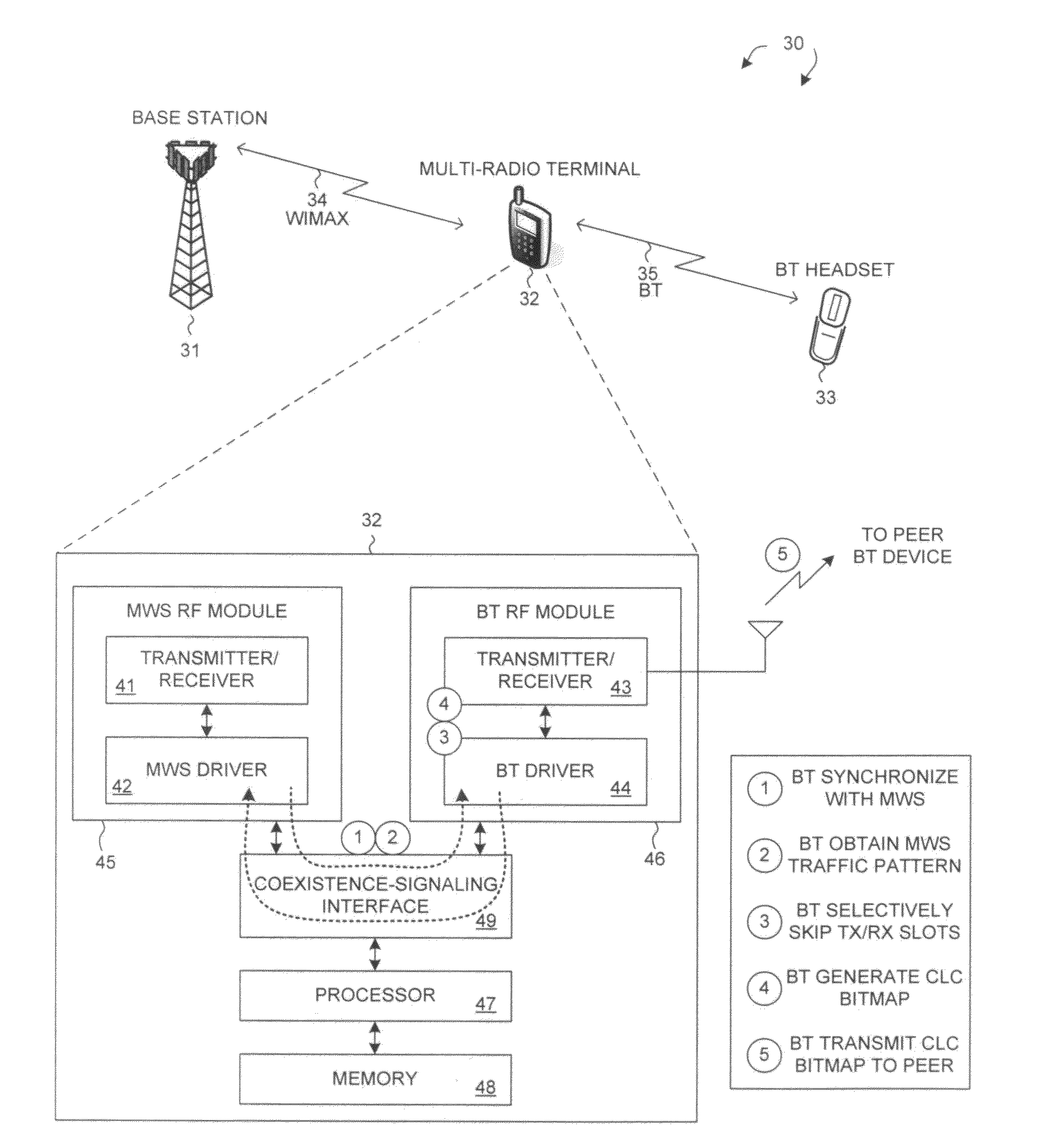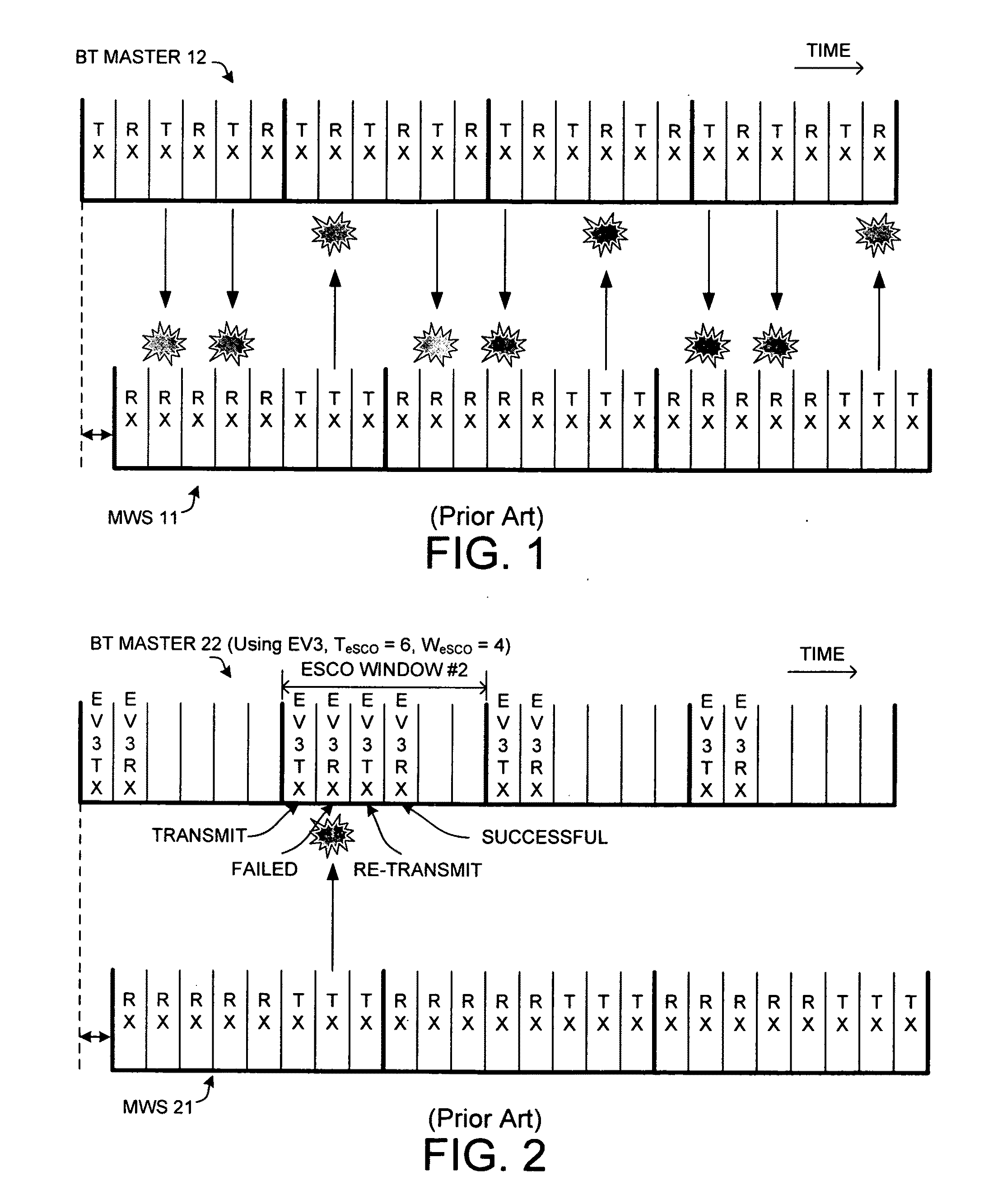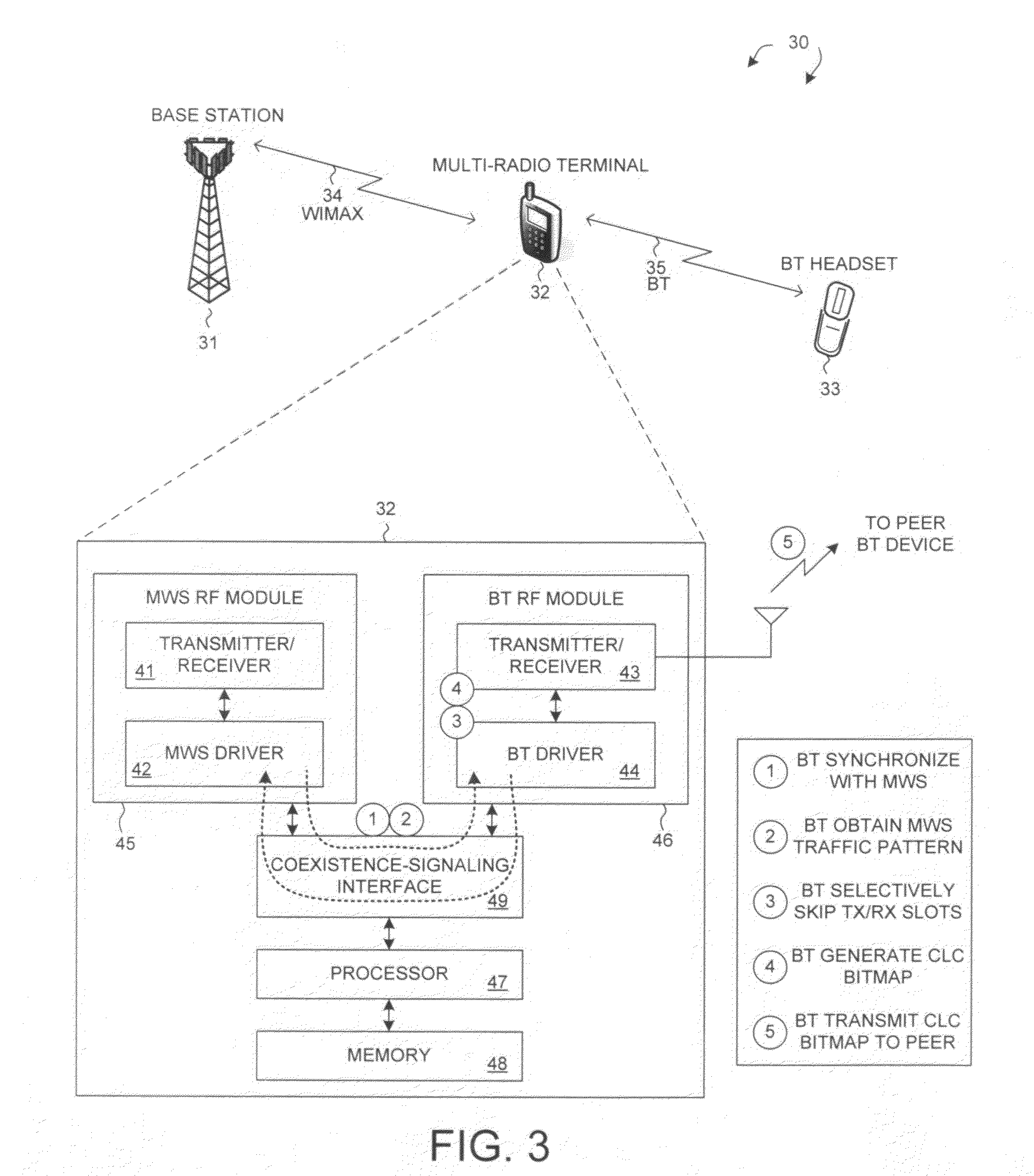System and methods for enhancing coexistence efficiency for multi-radio terminals
a multi-radio terminal and coexistence efficiency technology, applied in the field of wireless network communications, can solve the problems of affecting the reception of the second radio module, the simultaneous operation of multiple radio modules co-located on the same physical device, and suffer significant degradation, so as to reduce interference with the co-located radio module and save energy
- Summary
- Abstract
- Description
- Claims
- Application Information
AI Technical Summary
Benefits of technology
Problems solved by technology
Method used
Image
Examples
first embodiment
FIG. 4 illustrates selectively skipping communication slots in accordance with one novel aspect. In the example of FIG. 4, MWS radio module 51 has a typical MWS traffic pattern, each MWS frame contains eight communication slots including five consecutive RX slots followed by three consecutive TX slots. On the other hand, BT master radio module 52 has an Asynchronous Connection-Oriented (ACL) traffic pattern. A Time Division Duplex (TDD) scheme is used by BT devices where BT master and BT slave alternate TX and RX operation. The packet start shall be aligned with the slot start. BT master 52 first aligns its communication slots with MWS51 to minimize mutual interference. BT52 then obtains the traffic pattern of MWS51. Based on the obtained traffic pattern, BT master 52 deliberately gives up certain allowed TX and RX slots that will be affected by co-located MWS radio module 51 to save energy. As illustrated in FIG. 4, the TX / RX communication slots denoted by a think-lined box are ori...
second embodiment
FIG. 5 illustrates selectively skipping communication slots in accordance with one novel aspect. In the example of FIG. 5, MWS radio module 53 has the same traffic pattern as MWS51 in FIG. 4, each MWS frame contains eight communication slots including five consecutive RX slots followed by three consecutive TX slots. BT master radio module 54, however, has an extended voice (EV3) traffic pattern, each eSCO window contains six communication slots (i.e., TeSCO=6) with one reserved TX slot followed by one reserved RX slot and four retransmission time slots (i.e., WeSCO=4). As illustrated in FIG. 5, BT54 deliberately gives up EV3 data transmission in originally reserved TX slot 55 because an acknowledgement for the transmitted EV3 data will not be successfully received in the next RX slot 56 due to interference from MWS53. In addition, BT54 also skips EV3 data reception in originally reserved RX slot 56 to save energy. Instead, BT54 performs data transmission and reception successfully i...
PUM
 Login to View More
Login to View More Abstract
Description
Claims
Application Information
 Login to View More
Login to View More - R&D
- Intellectual Property
- Life Sciences
- Materials
- Tech Scout
- Unparalleled Data Quality
- Higher Quality Content
- 60% Fewer Hallucinations
Browse by: Latest US Patents, China's latest patents, Technical Efficacy Thesaurus, Application Domain, Technology Topic, Popular Technical Reports.
© 2025 PatSnap. All rights reserved.Legal|Privacy policy|Modern Slavery Act Transparency Statement|Sitemap|About US| Contact US: help@patsnap.com



